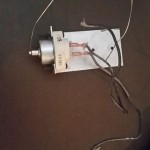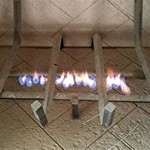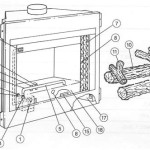How to Clean a Brick Fireplace Mantel
A brick fireplace mantel serves as a focal point in many homes, adding character and warmth to the living space. However, due to its porous nature and proximity to the fireplace, a brick mantel can accumulate soot, dust, and grime over time. Regular cleaning is essential to maintain its aesthetic appeal and prevent permanent staining. This article details the steps and methods for effectively cleaning a brick fireplace mantel, ensuring it remains a beautiful and clean feature of your home.
Assessing the Level of Soiling and Choosing Appropriate Cleaning Supplies
Before beginning the cleaning process, it is crucial to assess the extent of the soiling on the brick mantel. This assessment will help determine the most appropriate cleaning solutions and techniques to use. Lightly soiled mantels may only require gentle cleaning, while heavily soiled mantels might necessitate more aggressive methods.
For light soiling, a simple solution of dish soap and water might suffice. For heavier soiling, consider using a specialized brick cleaner or a mixture of trisodium phosphate (TSP) and water. Always test any cleaning solution in an inconspicuous area of the mantel before applying it to the entire surface to ensure it does not cause discoloration or damage. Other necessary supplies include:
- A soft-bristled brush or scrub brush (avoid using metal brushes as they can scratch the brick)
- A vacuum cleaner with a brush attachment
- Clean cloths or sponges
- A bucket or container for the cleaning solution
- Protective gloves
- Eye protection
- Painter's tape and plastic sheeting (to protect surrounding areas)
Safety is paramount when working with cleaning chemicals. Always wear protective gloves and eye protection to prevent skin and eye irritation. Ensure adequate ventilation by opening windows or using a fan. If using TSP, consult the product label for specific safety precautions.
The Initial Cleaning Process: Removing Loose Debris and Dust
The first step in cleaning a brick fireplace mantel is to remove any loose debris and dust. This can be accomplished using a vacuum cleaner with a brush attachment. Carefully vacuum the entire surface of the mantel, paying close attention to crevices and corners where dust and soot tend to accumulate. The brush attachment will help loosen stubborn particles without scratching the brick.
Alternatively, a soft-bristled brush can be used to sweep away loose debris. Brush in a downward motion to prevent dust from spreading upwards. Once the loose debris has been removed, wipe down the mantel with a clean, dry cloth to remove any remaining surface dust.
Protect the surrounding areas by using painter's tape and plastic sheeting to cover the wall behind the mantel and any flooring or furniture below. This will prevent cleaning solutions from splattering and potentially staining these surfaces.
Applying the Cleaning Solution and Scrubbing the Brick Surface
After removing loose debris and protecting the surrounding areas, it is time to apply the chosen cleaning solution. For lightly soiled mantels, prepare a solution of warm water and a mild dish soap. For heavily soiled mantels, consider using a specialized brick cleaner or a solution of TSP and water. Follow the manufacturer's instructions carefully when using commercial brick cleaners or TSP.
Wet a scrub brush or sponge with the cleaning solution and apply it to the brick surface. Work in small sections, scrubbing the brick gently to avoid damaging the surface. Pay particular attention to areas with heavy soot buildup. For stubborn stains, allow the cleaning solution to sit on the brick for a few minutes before scrubbing.
Avoid using excessive amounts of water, as this can saturate the brick and potentially lead to water damage. Instead, use just enough solution to dampen the brick surface. If using a TSP solution, rinse the brick thoroughly with clean water after scrubbing to remove any residue.
For heavily soiled or porous brick, a poultice may be necessary. A poultice is a paste-like substance that draws out stains from the brick. Mix a suitable absorbent material, such as diatomaceous earth or baking soda, with the cleaning solution to form a thick paste. Apply the poultice to the stained area and cover it with plastic wrap. Allow the poultice to dry completely, then scrape it off with a plastic scraper or putty knife. Rinse the area with clean water and allow it to dry thoroughly.
Rinsing and Drying the Brick Mantel
Once the scrubbing is complete, rinse the brick mantel thoroughly with clean water to remove any remaining cleaning solution or residue. Use a clean sponge or cloth to wipe down the surface, ensuring that all traces of the cleaning solution are removed.
To dry the brick mantel, use clean, dry cloths or towels to absorb excess water. Alternatively, allow the mantel to air dry completely. Ensure adequate ventilation to speed up the drying process and prevent the formation of mold or mildew. A fan can be used to circulate air around the mantel.
After the mantel has completely dried, inspect it for any remaining stains or soiling. If necessary, repeat the cleaning process, focusing on the areas that require additional attention.
Dealing with Stubborn Stains and Specialized Cleaning Techniques
Some stains, such as those caused by creosote or oil, may be particularly stubborn and require specialized cleaning techniques. Creosote, a byproduct of burning wood, is a dark, tar-like substance that can be difficult to remove from brick. Oil stains can also be challenging to remove, as oil tends to penetrate the porous surface of the brick.
For creosote stains, consider using a specialized creosote remover or a strong degreaser. Follow the manufacturer's instructions carefully when using these products. Apply the remover to the stained area and allow it to sit for the recommended time before scrubbing with a stiff-bristled brush. Rinse the area thoroughly with clean water and allow it to dry completely.
For oil stains, try using a poultice made from baking soda and water. Apply the poultice to the stained area, cover it with plastic wrap, and allow it to dry completely. Scrape off the poultice and rinse the area with clean water. Repeat the process if necessary. In some cases, a solvent-based cleaner may be required to remove stubborn oil stains. Use solvents with caution and always follow the manufacturer's instructions.
Efflorescence, a white, powdery deposit that can appear on brick surfaces, is caused by the migration of salts to the surface of the brick. To remove efflorescence, brush the affected area with a stiff-bristled brush to remove the loose deposits. Then, apply a solution of muriatic acid and water, following the manufacturer's instructions carefully. Muriatic acid is a strong chemical and should be used with extreme caution. Always wear protective gloves, eye protection, and a respirator when working with muriatic acid. Rinse the area thoroughly with clean water and allow it to dry completely.
Protecting the Brick Mantel and Preventing Future Soiling
After cleaning the brick fireplace mantel, consider applying a sealant to protect it from future soiling and water damage. A brick sealant will create a barrier that prevents soot, dust, and grime from penetrating the surface of the brick, making it easier to clean in the future. Choose a sealant that is specifically designed for use on brick and follow the manufacturer's instructions carefully.
Regular maintenance is key to preventing the buildup of soot and grime on the brick mantel. Vacuum or dust the mantel regularly to remove loose debris. Wipe down the mantel with a damp cloth as needed to remove surface dirt. By following these simple maintenance tips, you can keep your brick fireplace mantel looking clean and beautiful for years to come.
Consider the type of wood burned in the fireplace. Certain types of wood produce more soot than others. Burning seasoned hardwoods, such as oak and maple, will produce less soot than burning softwoods, such as pine. Also, ensure that the fireplace damper is properly adjusted to allow for adequate airflow, which will help to reduce soot buildup.
Finally, consider having the chimney professionally cleaned on a regular basis. A clean chimney will draft more efficiently, reducing the amount of soot that is deposited on the brick mantel.

How To Clean Brick Fireplaces Mantels Hearths And More My Space

How To Clean A Fireplace Diy Basics

How To Clean Fireplace Bricks Simple Practical Beautiful

Mortar Wash Brick Fireplace Makeover Dimples And Tangles

How To Clean A Brick Fireplace The Family Handyman

How To Clean Fireplace Bricks Simple Practical Beautiful Brick

How To Clean Fireplace Brick Soot Marks And Grime Hometalk

How To Strip Paint From Brick Fireplace My Alternate Life
How To Clean Brickwork Of Hearth Chimney Stoves Fires Fireplaces Buildhub Org

Can T Figure Out How To Remove Mantle Doityourself Com Community Forums








